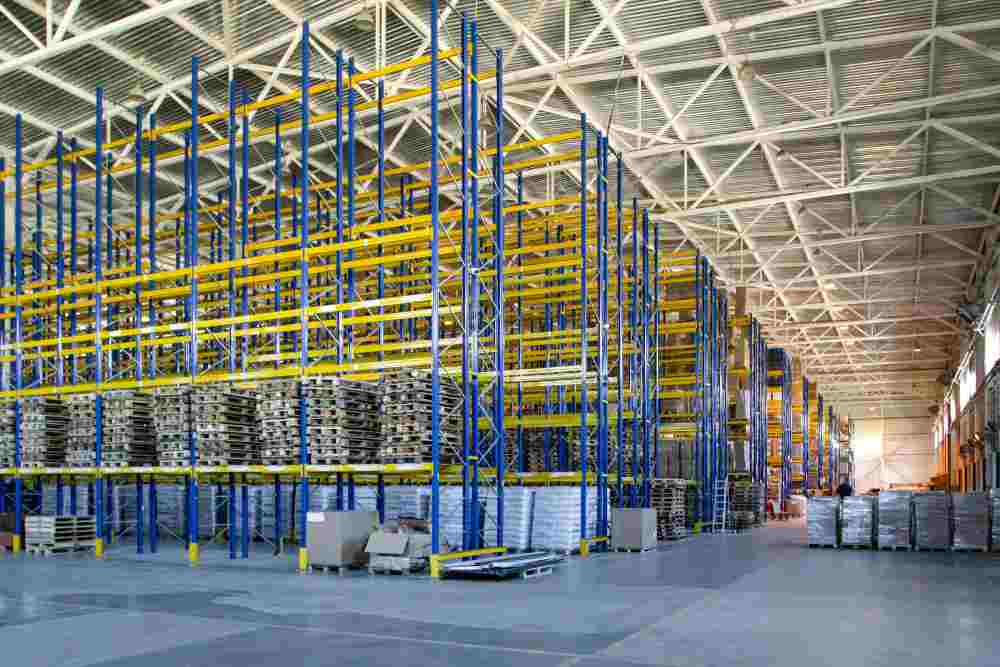Optimizing Warehouse Racking for Commercial Profitability
Effective warehouse racking arrangement is crucial for maximizing storage space, improving efficiency, and ultimately enhancing profitability. By strategically placing items within your racking for warehouse system, you can reduce handling costs, minimize product damage, and improve overall operational efficiency.
Key Considerations for Profitable Racking Arrangement
- Product Turnover:
- Place fast-moving products in easily accessible locations to minimize handling time and improve order fulfillment.
- Store slower-moving products in less convenient areas to optimize space utilization.
- Product Size and Weight:
- Group products of similar size and weight together to streamline picking and packing processes.
- Store heavier items on lower levels to reduce strain on racking systems and prevent accidents.
- Product Compatibility:
- Avoid storing incompatible products together to prevent damage, contamination, or safety hazards.
- Group products that are often ordered together to facilitate efficient picking.
- Warehouse Layout:
- Consider the overall layout of your warehouse, including aisle width, traffic flow, and the location of other equipment.
- Arrange racking systems to minimize unnecessary movement and maximize space utilization.
- Safety Considerations:
- Prioritize safety by following industry standards and regulations for racking installation and load capacity.
- Ensure that aisles are wide enough for forklift traffic and that items are stored securely to prevent accidents.
Strategies for Profitable Racking Arrangement
- Zone-Based Storage:
- Divide your warehouse into zones based on product type, frequency of access, or other relevant criteria.
- Locate frequently accessed products in high-traffic zones for easy retrieval.
- FIFO/LIFO Implementation:
- Determine the appropriate inventory rotation method (FIFO, LIFO, or FEFO) based on your product characteristics and business needs.
- Arrange products accordingly to ensure efficient turnover and minimize product spoilage.
- Bulk Storage:
- Store bulk items in designated areas to optimize space utilization and simplify inventory management.
- Seasonal Storage:
- Consider seasonal fluctuations in product demand and adjust your racking arrangement accordingly.
- Store seasonal items in less accessible areas during off-peak seasons to free up space for in-demand products.
- Technology Integration:
- Utilize barcode scanning, RFID, or other technologies to track inventory and optimize picking routes.
- Consider using warehouse management software to automate processes and improve efficiency.
FAQs
1. How often should I reorganize my warehouse racking? Regularly review and adjust your racking arrangement to ensure that it remains optimized for your current needs. Consider reorganizing at least once a year or whenever you notice significant changes in your product mix or inventory levels.
2. What is the best way to store seasonal products? Store seasonal products in designated areas or on higher levels of racking during off-peak seasons. This will free up space for in-demand products and improve overall efficiency.
3. How can I reduce product damage in my warehouse? Proper racking arrangement, careful handling, and regular inspections can help minimize product damage. Avoid overloading racking systems and ensure that items are stored securely.
4. What is the optimal aisle width for a warehouse? The optimal aisle width depends on the size of your forklifts and the type of racking system you are using. Generally, aisles should be wide enough for forklift traffic to move safely and efficiently.
5. How can I improve the productivity of my warehouse workers? Effective racking arrangement, clear labeling, and the use of technology can help improve worker productivity. Consider implementing lean manufacturing principles and providing training on efficient picking and packing techniques.
By carefully considering these factors and implementing effective racking strategies, you can optimize your warehouse operations, reduce costs, and improve overall profitability.

